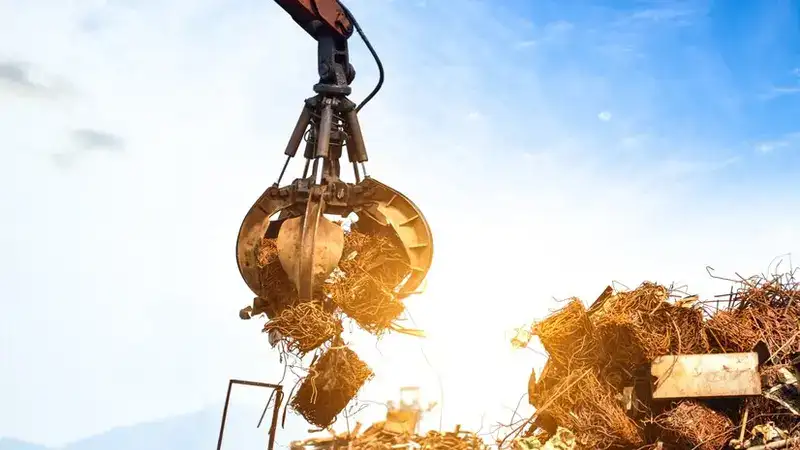Table of Contents
- Introduction to Scrap Metal Recycling
- Environmental Benefits of Metal Recycling
- Economic Impact of Scrap Metal Recycling
- How to Get Started with Scrap Metal Recycling
- Innovations in the Recycling Industry
- Conclusion: Future of Scrap Metal Recycling
Introduction to Scrap Metal Recycling
Recycling Scrap Metal recycling is an essential practice in today’s environmentally conscious world. This process not only reduces waste but also opens up avenues for diverse applications of recycled metals. Recycling transforms metals that might otherwise clutter landfills into valuable resources.
The increasing global demand for metals underscores the importance of recycling. By understanding the full scope of a metal’s lifecycle, industries and individuals can shift their perspectives on waste management. This knowledge is crucial for saving money and invaluable natural resources. As we dig deeper into the impacts of metal recycling, its dual role in environmental preservation and economic stimulation becomes evident.
Environmental Benefits of Metal Recycling
The environmental advantages of recycling metal are numerous and impactful. Recycling helps preserve natural resources by reducing the need for new mining. The mining process can be invasive, leading to habitat destruction and ecological imbalance. When metals are recycled, these negative impacts are significantly diminished. If you’re curious about what can metal be used for, you’ll find that recycled metals can be transformed into everything from new infrastructure components to everyday consumer goods.
Energy conservation is another significant benefit. Producing metals from recycled materials requires substantially less energy than processing raw ore. For example, recycling aluminum saves up to 95% of the energy costs of producing new aluminum from bauxite ore.
Visit WORLD JOURNEY MAGAZINE for more details
Keeping recyclable metals out of landfills prevents toxic substances from leaching into the ground and nearby water sources. This helps protect ecosystems and maintain biodiversity, ensuring healthier environments for all living organisms.
Economic Impact of Scrap Metal Recycling
Aside from its environmental significance, Recycling Scrap Metal offers numerous economic benefits. The industry serves as a significant job creator, providing employment opportunities across various stages of the recycling process, from collection to sorting and processing. This job creation supports local economies by generating income and promoting social stability.
Furthermore, businesses incorporating recycled metals into manufacturing often reduce production costs. The savings on raw material costs and energy expenses can then be passed on to consumers through lower-priced goods. As a result, recycled products become more accessible to a broader demographic, amplifying the positive impact of recycling. According to the Environmental Protection Agency, these energy savings translate into a considerable reduction in greenhouse gas emissions, a significant step toward mitigating climate change.
This cyclical economic benefit, where reduced costs lead to increased spending power, exemplifies the win-win nature of scrap metal recycling for individuals, businesses, and entire communities.
How to Get Started with Scrap Metal Recycling
Getting started with Recycling Scrap Metal doesn’t have to be daunting. The first step for individuals and businesses is identifying and separating potentially recyclable metals. Everyday household items like aluminum cans, copper wires, and steel appliances are often overlooked sources of recyclable metal.
Once you’ve gathered your scrap, it’s essential to sort them by type. This sorting process can increase the value of your recyclable materials and make processing more efficient. Many communities have local recycling centers that can assist in this endeavor by providing information and resources on best practices for recycling.
Promoting recycling awareness, particularly regarding the benefits of sustainability, can encourage more individuals and businesses to participate actively in recycling programs, enhancing collective environmental efforts.
Innovations in the Recycling Industry
The recycling industry continuously evolves thanks to technological innovations that improve efficiency and effectiveness. One notable advancement is the implementation of automated systems capable of sorting and processing large volumes of scrap metal quickly and accurately. These innovations help ensure that more materials are recycled correctly, improving the quality and quantity of recycled products.
Additionally, chemical recycling methods have emerged, enabling the recovery of high-value metals even from contaminated or mixed-material sources. This technology broadens the scope of recyclable materials, further reducing waste and conserving resources.
Such advancements showcase the recycling sector’s dedication to minimizing environmental footprints while maximizing economic benefits. With ongoing innovation, the potential for improving the sustainability of metal recycling remains vast and promising.
Conclusion: Future of Scrap Metal Recycling
Looking ahead, the future of scrap metal recycling seems exceedingly bright. As awareness of recycling’s environmental and economic benefits increases, more industries will likely adopt sustainable practices. The continuing evolution of recycling technologies will undoubtedly play a critical role in enhancing the effectiveness and reach of metal recycling efforts worldwide.
Ultimately, the collective push toward sustainability signals an encouraging shift where recycling transcends traditional waste management, becoming a cornerstone of sustainable development strategies for a healthier and more resource-efficient planet.



